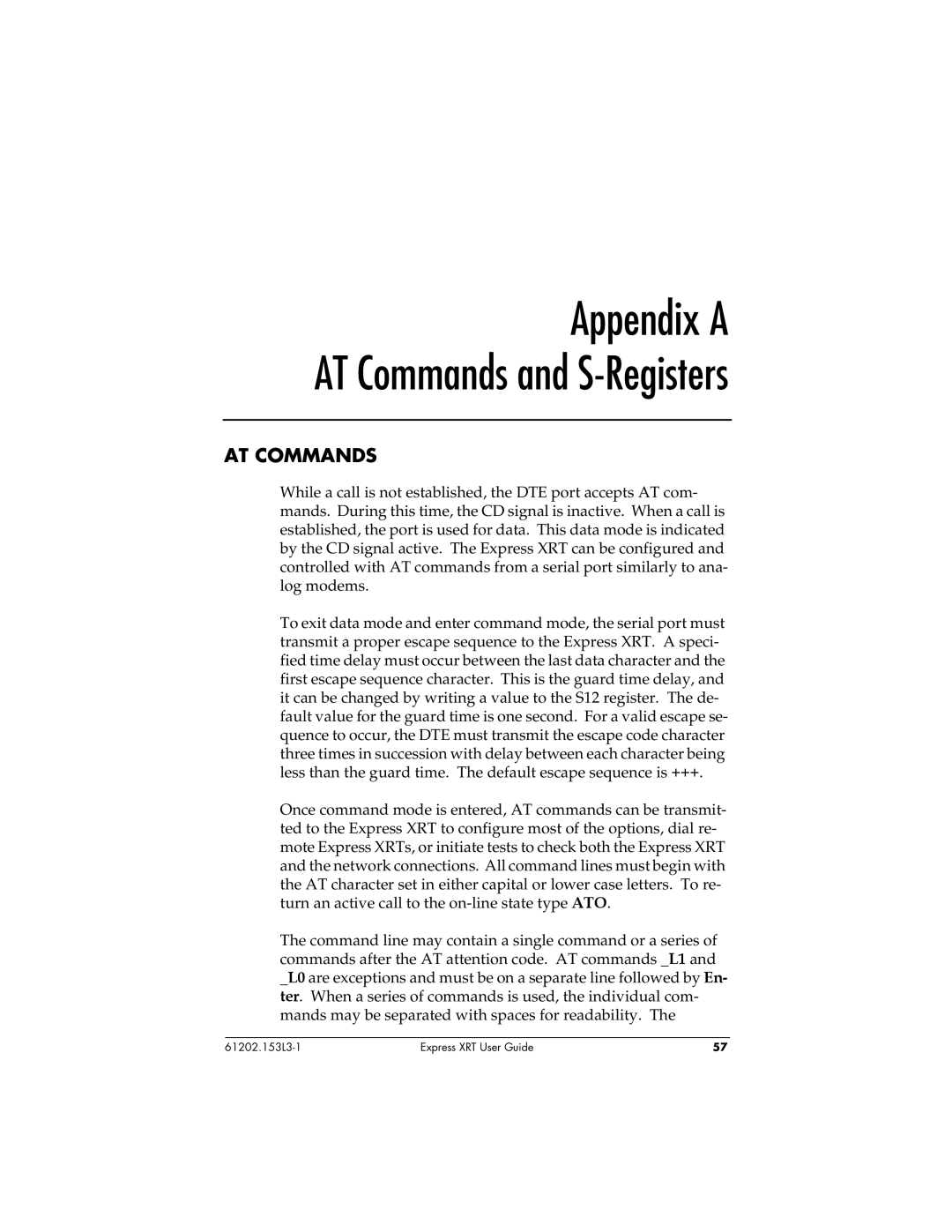
Appendix A AT Commands and S-Registers
AT COMMANDS
While a call is not established, the DTE port accepts AT com- mands. During this time, the CD signal is inactive. When a call is established, the port is used for data. This data mode is indicated by the CD signal active. The Express XRT can be configured and controlled with AT commands from a serial port similarly to ana- log modems.
To exit data mode and enter command mode, the serial port must transmit a proper escape sequence to the Express XRT. A speci- fied time delay must occur between the last data character and the first escape sequence character. This is the guard time delay, and it can be changed by writing a value to the S12 register. The de- fault value for the guard time is one second. For a valid escape se- quence to occur, the DTE must transmit the escape code character three times in succession with delay between each character being less than the guard time. The default escape sequence is +++.
Once command mode is entered, AT commands can be transmit- ted to the Express XRT to configure most of the options, dial re- mote Express XRTs, or initiate tests to check both the Express XRT and the network connections. All command lines must begin with the AT character set in either capital or lower case letters. To re- turn an active call to the
The command line may contain a single command or a series of commands after the AT attention code. AT commands _L1 and _L0 are exceptions and must be on a separate line followed by En- ter. When a series of commands is used, the individual com- mands may be separated with spaces for readability. The
Express XRT User Guide | 57 |
